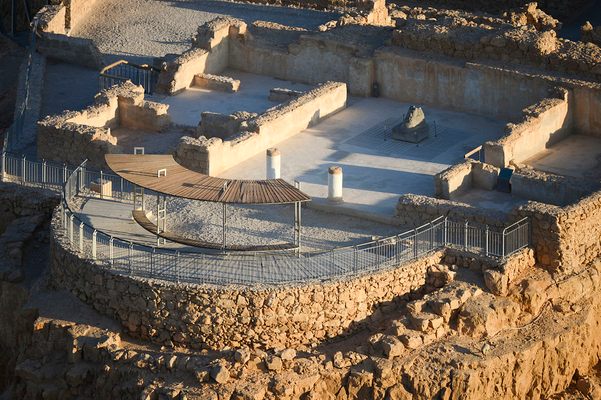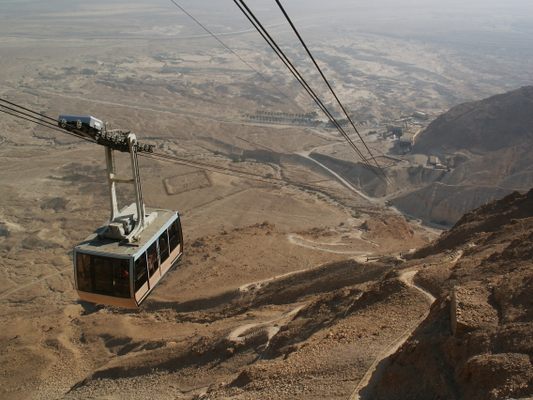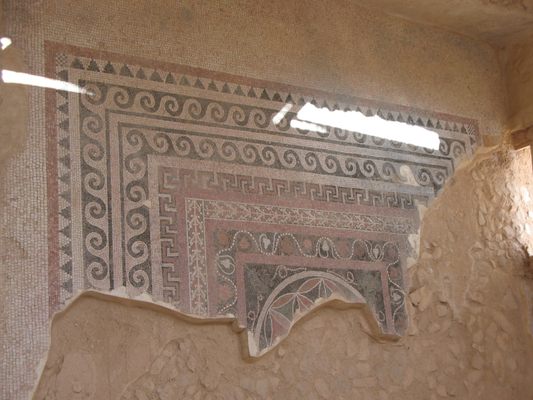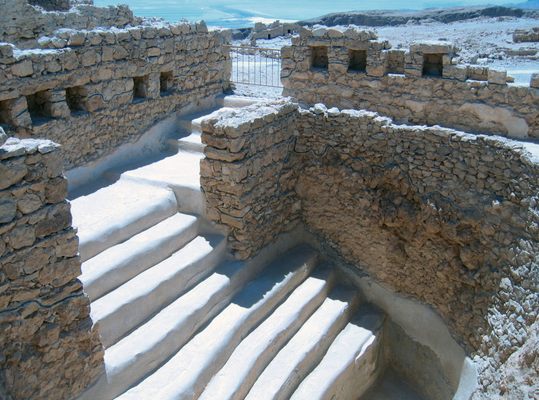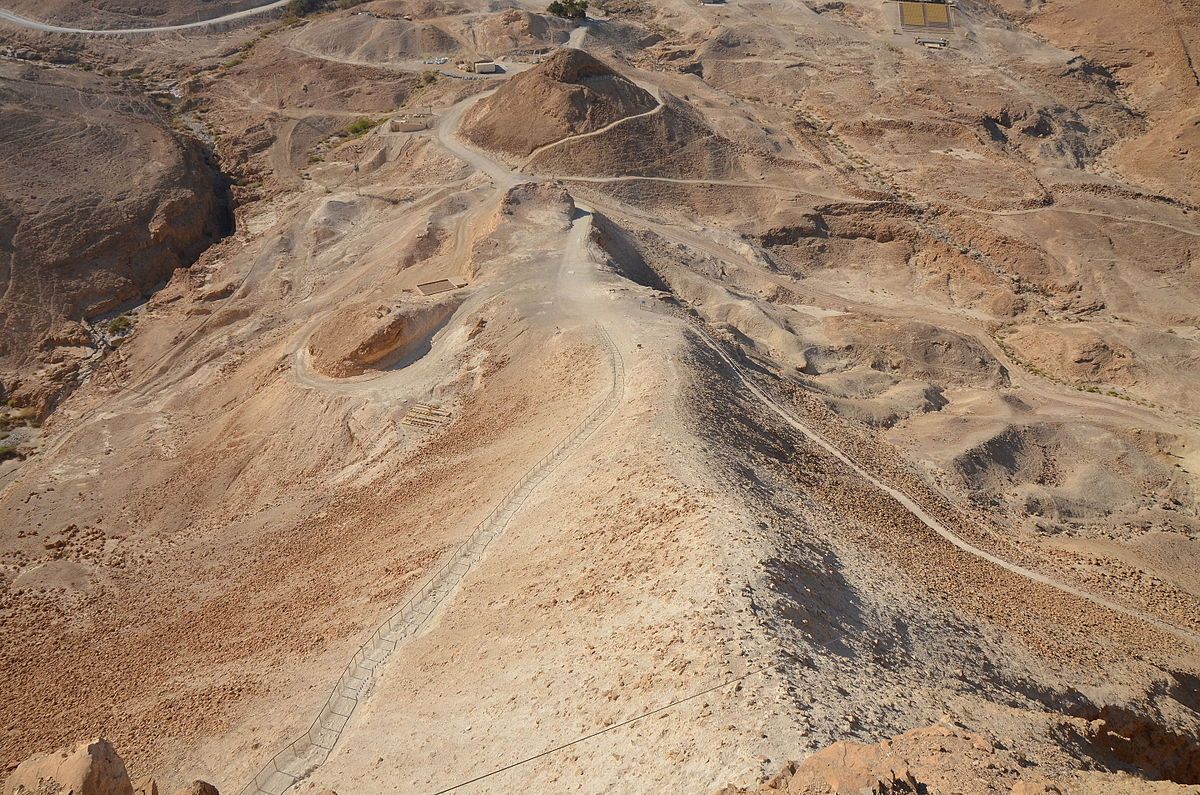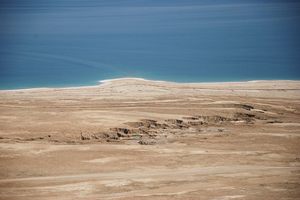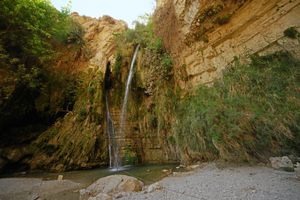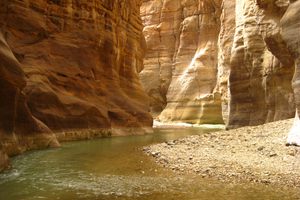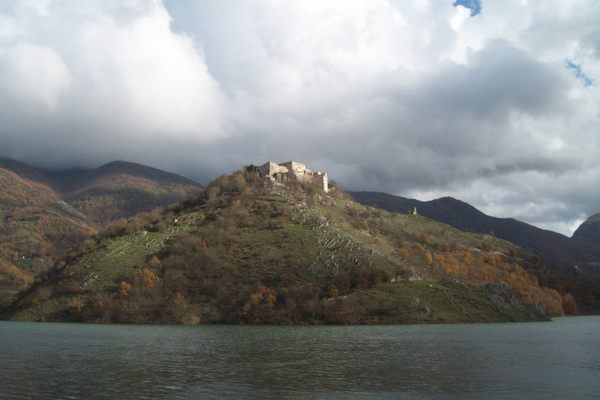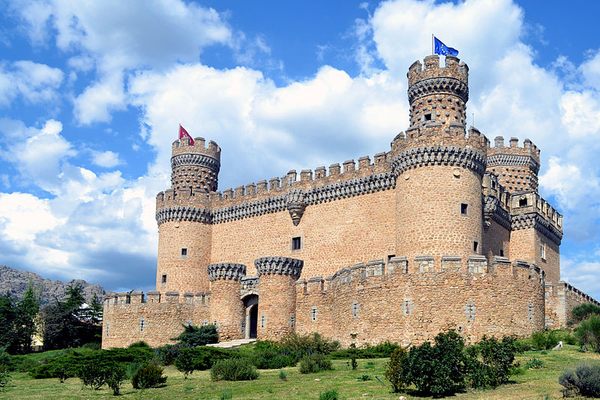About
Soldiers being inducted into the Israeli Defense Forces take their oath at different places in the country, but the pledge always ends with the line, “Masada shall not fall again.”
The story behind this inclusion dates back 2,000 years, all the way to the first century. Masada, a stunning natural fortress in Israel's Judean desert, was built in the Roman style by Herod, the king of Judea sometime between 37 and 31 BC. Perched nearly 1,500 feet above the Dead Sea on one side and flanked by the desert on the other side, the daunting complex was meant to be the king's refuge. It was designed to include a private palace for him, as well as administrative centers, storehouses, and an armory.
Several decades after Herod’s death, a group of Jews that were revolting against the Romans stormed the Roman garrison at Masada and set up base there. They were joined by the families of Jewish Zealots who were fleeing from trouble in Jerusalem. For three years, the group managed to defend the fortress against the Romans, but in year 73, the Romans laid siege to Masada, building a ramp around the walls, and battering the barriers until a hole was created.
The population of Jews inside knew they had no means of escape and decided to kill each other to avoid being captured by the enemy. They drew lots to decide who would kill whom, until only 10 men were left alive to kill the rest, and then themselves. When the Romans finally entered the complex, they found nearly 1,000 corpses. The Siege of Masada, as it was called, was one of the final events in the first Jewish-Roman war.
After being used briefly as a retreat for Byzantine monks in the 6th century, the fortress remained untouched for more than 13 centuries, and all signs of human habitation slowly disappeared. It wasn't rediscovered until the 19th century, and detailed excavations were carried out even later. The site has come to be a poignant symbol for the struggle of the Jewish people against oppression.
The remains of many buildings in the complex have been restored, including Herod’s private palace with its hanging terraces, bathhouses with preserved mosaics and murals, a synagogue, and the siege ramp and camp set up by the Romans. They stand testament to the fortress’s role in history. Note, however, that contemporary archaeologists have yet to arrive at a definitive consensus about the true story of the fall of Masada.
Related Tags
Know Before You Go
Like so many things in Israel, this site is best reached by car. It is possible to walk to the top of Masada, but there are also cable cars at regular intervals. Once at the top it is possible to wander at will. Don't go in summer when the exposed site and bright stone will be both blinding and incredibly hot!
There are several ways to reach the archaeological site at the top of the mountain. A cable car is available to take people to the top. Or, if you're up for it, climb up the “Snake Path.” The more ambitious climb the “Snake Path” to watch the sunrise over the Dead-Sea. The most exciting and demanding option is to make a full day hike. Climb up the mountain on the ancient “Runners” path, visit Masada, then get down via Elazar Mountain. You will visit the ruins of several Roman siege camps and get amazing views of Masada from different angles.
Community Contributors
Added By
Published
June 23, 2017
Sources
- https://en.wikipedia.org/wiki/Masada
- http://www.jewishvirtuallibrary.org/masada-desert-fortress
- http://whc.unesco.org/en/list/1040
- http://mosaic.lk.net/g-masada.html
- http://www.timesofisrael.com/masada-tragic-fortress-in-the-sky/
- https://www.touristisrael.com/masada-dead-sea/848/
- http://www.historynet.com/the-myth-of-masada.htm
- https://hike-israel.com/hikes/hikes-around-jerusalem/masada/

